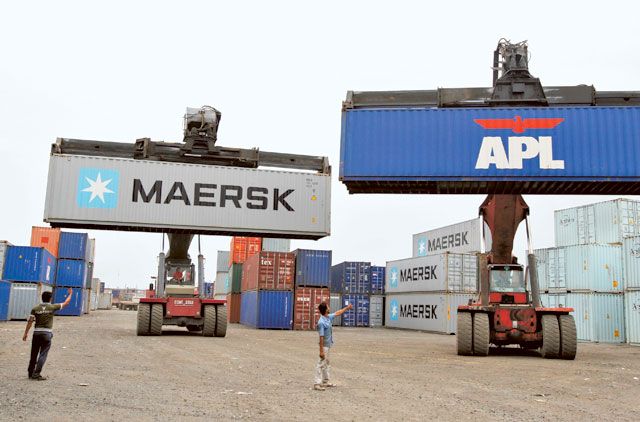Mumbai: India has gone from the country set to overtake China to the country that can do nothing right. Now, a few contrarians see signs India is turning a corner.
India’s problems from a record current account deficit to stalled policy reforms and economic growth running at its weakest pace in nine years, are well known and explain a slump in the rupee to a record low.
But a handful of signs suggest prospects could be changing.
Furniture maker Ikea and Coca Cola have announced they will pump nearly $5 billion (Dh18.37 billion) into India. Investment banks are upgrading their view on Indian stocks and Prime Minister Manmohan Singh is making the right noises.
He vowed last week to “revive the animal spirit in the country’s economy” as he took control of the finance ministry. As finance minister in the early 1990s, when India suffered a balance of payment crisis, he orchestrated reforms that set off two decades of rapid growth.
“India is a very good opportunity. It’s growing at 6 per cent and can easily grow at 10 per cent if the roadblock created by politicians is removed,” Pinak Maitra, chief financial officer of investment firm Kuwait Projects, or Kipco, said.
“It will naturally grow as the people of India, the entrepreneur of India, the technology, the intellect, it’s all there,” he said, adding the comments reflected his personal views.
Kipco, Kuwait’s largest investment company with consolidated assets of about $21 billion at the end of 2011, does not yet invest in the country but plans to launch India products for clients, Maitra said.
Sluggish industrial output
Optimists may seem brave. Economic growth has slumped from close to 10 per cent before the global financial crisis to a nine-year low of 5.3 per cent in the March quarter. Sluggish industrial output figures for April suggested the June quarter was little stronger.
Ratings agencies Standard & Poor’s and Fitch have threatened to downgrade India’s investment status to junk, saying a fickle government has strayed from the path of economic liberalisation and is not doing enough to deal with another drag on the economy, the hefty federal fiscal deficit.
Inflation is uncomfortably high at well above 7 per cent and the Eurozone crisis is a risk for India as well as the global economy.
Still, some indicators show investors are quietly putting money into India, seeing through the headlines to prepare for a rebound in the country’s fortunes.
Foreign institutional investors bought a net $8.6 billion in equities this year and a net $3.9 billion in debt. The bulk of it was in the first two months of the year, but India has yet to see significant outflows.
Best-performing Brics index
That has helped make India’s benchmark BSE index the best-performing index among the countries that make up the Brics grouping that also includes Brazil, Russia, China, and South Africa. Its performance in emerging Asia is topped only by the frontier markets of Pakistan and Vietnam.
Deutsche Bank and JPMorgan upgraded their ratings on Indian stocks to ‘overweight’, jolting investors who had become accustomed to a stream of downgrades.
Both cited cheap valuations. JPMorgan said India’s stocks were trading at 12 times forward earnings, or one standard deviation below their 10-year average, while Deutsche estimated shares are at their cheapest in close to two decades on a sales and EBITDA basis.
“This is the best time to fish for selective investments in India for a long-term investor,” Brij Raj Singh, CEO of investment management firm Baer Capital Partners in Dubai, which has over $400 million invested in the country, said.
“The biggest concerns in India are the currency depreciation and political paralysis, but fundamentally India is attractive, with a strong domestic consumption story,” he said.
Ajay Kapur, Deutsche Bank’s Asia strategist, reflects the attitude of investors seeing opportunities beyond the data.
“The angst over falling Indian economic growth is so yesterday,” Kapur wrote in a note. “Everyone is now an expert on just how bad things are.”
Managing current account deficit
Slumping oil prices — with benchmark Brent crude futures down 24 per cent since a 2012 peak in March — should feed through and provide relief for the country’s current account deficit.
Each $10 per barrel drop in the crude price, if sustained, would reduce the current account deficit by 0.4-0.5 percentage points, analysts estimate.
Figures on Friday showed the current account deficit blew out in the March quarter to a record of $21.7 billion, contributing to a balance of payments deficit of $5.7 billion.
“We actually believe that if given the fall in oil prices and the drop in gold imports, the current account deficit will narrow down to below 3 per cent of GDP in fiscal 2013,” Arvind Chari, a debt fund manager at Quantum Asset Management, which manages $1 billion in equities and $250 million in fixed income, said. “From a total return perspective, asset and currency returns, I think Indian bonds, deposits and Indian equities look attractive from a 1-2 year perspective,” Chari said.
The crude-price drop also reduces pressure on the government’s finances because it heavily subsidises some oil products.
The slide in the rupee — April to June was the currency’s worst quarter in 17 years — has the potential to reduce demand for costlier imports and boost cheaper exports.













